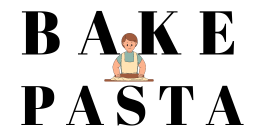Few foods are quite as nostalgic and cozy as corn casserole when it comes to comfort food. A mainstay at potlucks, holiday get-togethers, and family feasts alike is this traditional American side dish. A lot of people love it because of its creamy texture, delicate sweetness, and filling corn flavor. Together, we will explore the history, flavor profile, and nutritional benefits of corn casseroles as well as how to make your own.
History
America’s heartland, where corn has long been a staple food, is where the origins of corn casserole may be found. Since corn is a versatile and abundant crop, it has been used in many different nations’ cuisines. Traditional corn pudding recipes, which were popular in Southern and Midwestern cooking, are probably where corn casserole as we know it now originated.
The foods that were available to them in their new surroundings led settlers to modify their culinary traditions as they dispersed throughout America. Due to its abundance in the Midwest, corn started to appear frequently in local recipes. The flavor of this well-liked grain could be highlighted in a straightforward yet delicious approach with casserole.

RECIPE (INGREDIENTS)
- 1 can (15.25 oz) whole kernel corn, drained
- 1 can (15.25 oz) cream-style corn
- 1 cup sour cream
- 1/2 cup melted butter
- 1 package (8.5 oz) cornbread mix
- 1 cup shredded cheddar cheese
- Salt and pepper to taste
Instructions:
- Preheat your oven to 350°F (175°C). Grease a 9×13 inch baking dish.
- In a large mixing bowl, combine the whole kernel corn, cream-style corn, sour cream, and melted butter. Stir until well combined.
- Gradually add the cornbread mix to the bowl, stirring until the batter is smooth and evenly mixed.
- Pour the mixture into the prepared baking dish, spreading it out evenly.
- Sprinkle the shredded cheddar cheese over the top of the mixture.
- Bake in the preheated oven for 45-50 minutes, or until the edges are golden brown and the center is set.
- Allow the corn casserole to cool for a few minutes before serving.
Additional Tips:
- For a touch of sweetness, you can add a tablespoon of sugar to the batter.
- Feel free to customize your corn casserole by adding diced jalapeños for a spicy kick or cooked bacon for extra flavor.
- Leftovers can be stored in an airtight container in the refrigerator for up to 3 days. Simply reheat in the oven or microwave before serving.
Nutritional Value Of Corn Casserole
The nutritional value of corn casserole can vary depending on the specific ingredients and proportions used in the recipe. However, here’s a general overview of the nutritional components typically found in a serving of corn casserole:
- Calories: A typical serving of corn casserole (about 1/8th of a 9×13 inch baking dish) may contain around 200-300 calories.
- Protein: it usually contains a moderate amount of protein, primarily from ingredients like corn, cheese, and sour cream. A serving might provide approximately 5-10 grams of protein.
- Carbohydrates: Corn casserole tends to be higher in carbohydrates, mainly from sources like cornmeal, corn, and any added sugars. A serving might contain 20-30 grams of carbohydrates.
- Fat: The fat content in corn casserole comes from ingredients such as butter, cheese, and sour cream. A serving may have around 10-20 grams of fat, depending on the recipe and portion size.
- Fiber: Corn casserole can provide a small amount of dietary fiber, primarily from the corn and any whole grain ingredients like cornmeal. A serving might contain 1-3 grams of fiber.
- Vitamins and Minerals: Corn is a good source of various vitamins and minerals, including vitamin C, vitamin B6, folate, magnesium, and potassium. Other ingredients like cheese and sour cream contribute some calcium and vitamin A.
It’s important to note that the nutritional values can vary based on factors such as the specific brands of ingredients used, any modifications to the recipe, and the portion size consumed. Additionally, if you’re concerned about the nutritional content of your corn casserole, you can make adjustments to the recipe, such as using lower-fat dairy products or reducing added sugars, to better align with your dietary preferences and nutritional goals.









